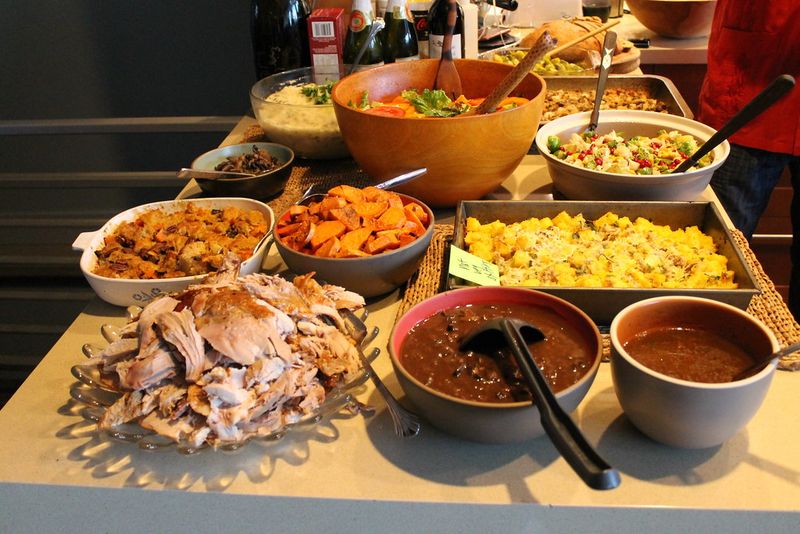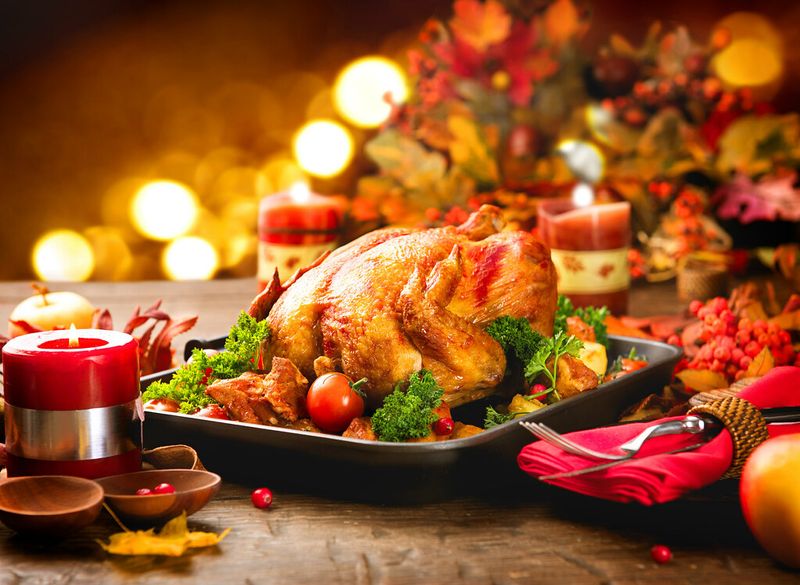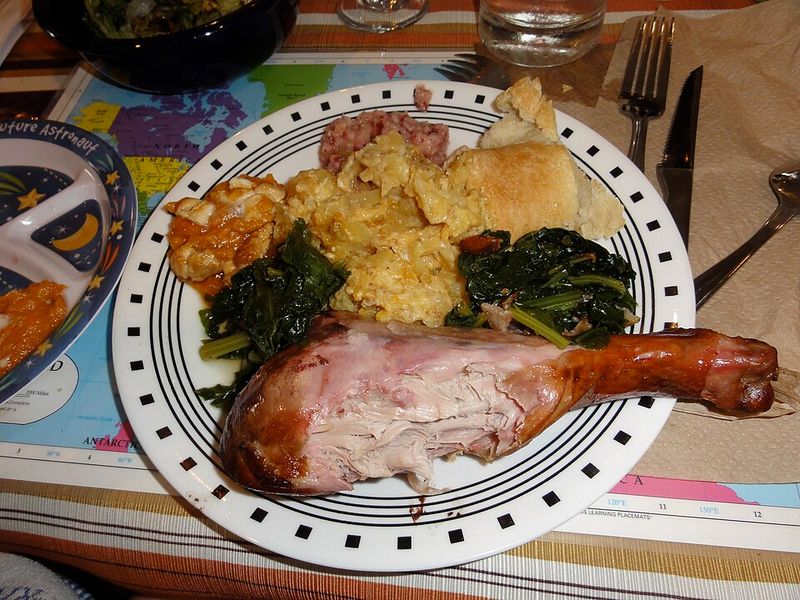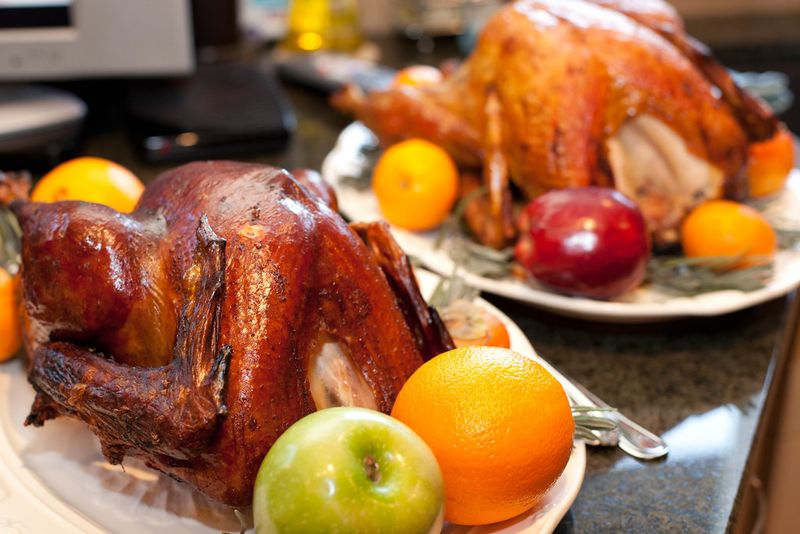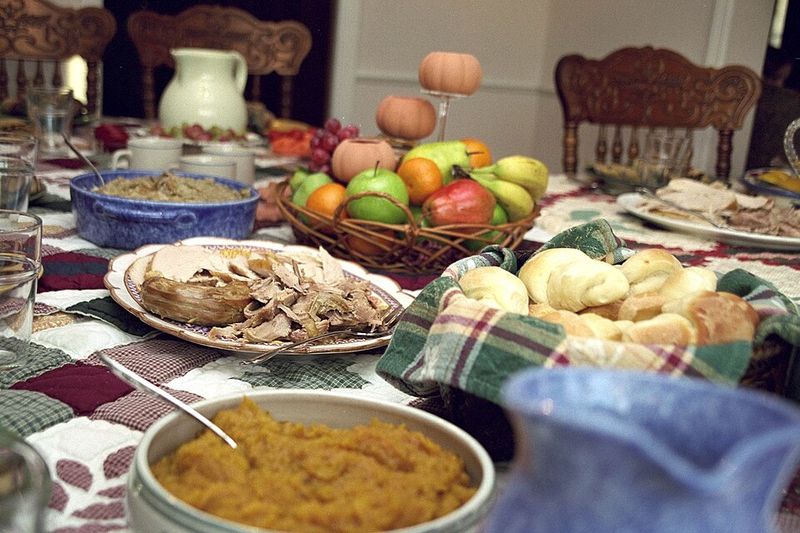Holiday sticker shock is finally easing, and that makes planning your feast feel a little lighter. You will see noticeable price relief on core Thanksgiving staples, thanks to lower ingredient costs and deep retail promotions. Some items are still up, but the big-ticket pieces of the meal are trending down, shifting the entire bill in your favor. Here is exactly why your Thanksgiving dinner should cost less this year and how to make the savings work for you.
1. Overall Dinner Cost Has Dropped
The average cost of a classic Thanksgiving dinner for 10 is now $55.18, down 5 percent from 2024, according to the American Farm Bureau Federation. That drop may not sound huge at first, but it adds up when you include turkey, sides, and dessert. You can build the same crowd-pleasing menu while keeping more room in your budget for travel or extras.
Think of it as a reset after a few high-inflation seasons. Price relief often starts with a few key items, then filters through the cart. This year, the basket moved in your favor, and you will feel it at checkout.
2. Turkey Prices Plunged
The star of the table got cheaper fast. A 16 pound frozen turkey now averages about $21.50, a 16.3 percent drop from last year, per Farm Bureau tracking. When the centerpiece falls this much, the entire meal budget loosens, letting you add extras like an extra pie or nicer beverages.
If you shop early and watch circulars, you can stack sale pricing with loyalty coupons. Some grocers even offer turkey credits with minimum purchases. Timing and a quick scan of weekly ads can lock in the lowest bird price.
3. Discounts from Retailers Are Helping
Grocers are leaning into aggressive holiday promotions to draw foot traffic. You will see limited time offers on turkey, stuffing, and pantry staples that anchor the Thanksgiving basket. These promotions push competition and pull prices down across the aisle.
Look for loyalty-only deals and digital coupons that apply at checkout. Many retailers match or beat rival ads, especially the week before the holiday. If you clip deals in the app and plan around promo windows, your cart total drops fast.
4. Some Stores Offer Ultra Cheap Meal Bundles
Bundle deals are back in a big way. Lidl is offering a 10 person Thanksgiving bundle for about $36, roughly $3.60 per person, which undercuts typical do it yourself shopping. Those bundles can simplify planning when you want a solid baseline menu without guesswork.
Check what is included and what is not. If you already own spices and pantry items, the bundle may be the cheapest path to a full spread. Pair it with one or two special add ons to keep the meal both affordable and memorable.
5. Lower Wheat Costs Help Stuffing and Rolls
Falling wheat prices are easing the cost of bread-based sides. The Farm Bureau notes that lower grain costs feed through to stuffing mix and dinner rolls, two items that show up on almost every table. When commodity pressure eases, packaged goods makers often pass along part of the savings.
You will notice promotional pricing on shelf and more frequent buy one get one deals. If bread is your family’s weakness, this is your year to stock up. Freeze extras for leftovers and sliders all weekend.
6. Other Key Ingredients Are Cheaper
Several supporting players are trending down too. Dinner rolls are down 14.6 percent versus last year, while stuffing mix in a 14 ounce box dropped about 9 percent, per Farm Bureau. Even pie crusts are slightly cheaper, by around 0.8 percent, which quietly helps the dessert budget.
Small drops across multiple items compound into real savings. Stack store coupons and pick store brands where quality matches your taste. You can keep your menu intact without trimming favorite sides.
7. Grocery Inflation Isn’t Hitting All Holiday Foods Equally
Inflation remains uneven across categories, and that works in your favor this season. Wells Fargo research suggests staples like turkey and stuffing are not rising as fast as other foods, and in many cases they are cheaper. That means your holiday basket behaves differently than your regular weekly shop.
Focus on the categories seeing relief and swap out pricier extras. If a specialty cheese is up, consider a simple dip or homemade spread. The big wins are in the core Thanksgiving set, so lean into them.
8. Store-Brand Options Are More Popular
Private label has earned serious trust, and shoppers are embracing it to cut costs. Store-brand stuffing, rolls, canned veg, and even dessert shortcuts can shave dollars without sacrificing taste. Many products come from the same co-packers as national brands, just with simpler packaging.
Try one or two swaps this year and compare at the table. If guests cannot tell the difference, keep the savings. Use the extra budget for fresh produce or better beverages to elevate the meal.
9. Some Upside for Sweet Potato Prices … and Downside for Others
Not everything is cheaper. Sweet potatoes jumped about 37 percent and veggie trays rose roughly 61.3 percent, according to Farm Bureau tallies. Those spikes can sting, especially if your menu leans heavily on prepared produce.
The good news is that big declines in turkey and several staples more than offset the pain. Roast whole carrots or squash as a swap, or buy raw sweet potatoes and prep from scratch. Flexing the menu keeps your total spend in check.
10. Regional Variations Matter
Where you shop affects your total. The Farm Bureau reports the South has the cheapest average Thanksgiving dinner at about $50.01, while the West is priciest near $61.75. Freight, regional supply, and competition all play roles in these differences.
If you live in a higher cost region, lean harder on bundles and loyalty deals. Consider warehouse clubs or discount grocers for staples. Planning a short drive to a lower cost store can shave a few dollars off the final bill.
11. Three-Year Trend of Declining Costs
This is not a one off. The AFBF has recorded three consecutive years of declines in the average cost of a Thanksgiving meal. Momentum matters, because it signals that supply chains and commodity inputs are stabilizing for this holiday basket.
For you, that means planning with more confidence and less last minute scrambling. Sales should be plentiful and predictable. Lock in nonperishables early, then pounce on fresh items during peak promo weeks.
12. Lower Retail Demand for Turkey
Another factor behind cheaper birds is softer demand. Fewer households are buying big turkeys, so retailers discount to move inventory and avoid leftovers. That dynamic lets you score a deal without sacrificing quality.
Right size your bird to your guest list and prioritize the lowest unit price. If you host a smaller group, consider a breast or half bird and reinvest the savings in sides. Reduced demand plus smart sizing equals a leaner receipt.
13. Grocery Chains Are Using Bundles as Marketing Tools
Big retailers like Walmart, Target, and Lidl are leaning on low-cost Thanksgiving bundles to win traffic. Even if the bundles include fewer or simpler items, the headline price lowers your effective meal cost. It also anchors expectations, pushing rivals to respond with their own deals.
Compare inclusions, serving sizes, and required spend thresholds. If a bundle covers your basics, you can add a couple of signature dishes without breaking budget. Use circulars and apps to track bundle refreshes as the holiday nears.

